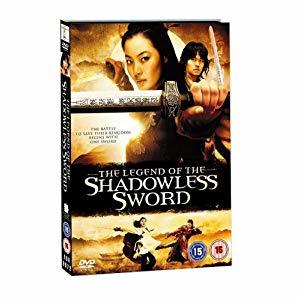Jonathan Clements's Blog, page 11
April 22, 2012
J-Pod Redux
 I’m a guest once more on the Manga UK podcast, discussing Miyazaki’s Heidi, Joss Whedon’s Cabin in the Woods, the unexpected pleasures of Battleship, and stirring smells on the London Underground. Download and listen for free, here.
I’m a guest once more on the Manga UK podcast, discussing Miyazaki’s Heidi, Joss Whedon’s Cabin in the Woods, the unexpected pleasures of Battleship, and stirring smells on the London Underground. Download and listen for free, here.
Now available from iTunes.
April 15, 2012
Brought to Book
I’m off to the London Book Fair tomorrow to appear on a panel about Chinese science fiction, alongside Ah Lai, the former editor of Kehuan Shijie magazine, and novelist Liu Cixin, whose name I last dropped on the first Manga UK podcast, when enthusing about the likelihood of ever seeing a good science fiction cartoon from the People’s Republic. John Clute moderates, probably with big words.
April 8, 2012
Anime’s Media Mix
 My review of Marc Steinberg’s new book Anime’s Media Mix: Franchising Toys and Characters in Japan, is up now on the Manga UK blog. It’s an incisive study of the way in which patterns of consumption have changed in Japan since 1963, placing Astro Boy and Haruhi Suzumiya front and centre in the story of how passive viewers have transformed into active fans.
My review of Marc Steinberg’s new book Anime’s Media Mix: Franchising Toys and Characters in Japan, is up now on the Manga UK blog. It’s an incisive study of the way in which patterns of consumption have changed in Japan since 1963, placing Astro Boy and Haruhi Suzumiya front and centre in the story of how passive viewers have transformed into active fans.
Anime's Media Mix
 My review of Marc Steinberg's new book Anime's Media Mix: Franchising Toys and Characters in Japan, is up now on the Manga UK blog. It's an incisive study of the way in which patterns of consumption have changed in Japan since 1963, placing Astro Boy and Haruhi Suzumiya front and centre in the story of how passive viewers have transformed into active fans.
My review of Marc Steinberg's new book Anime's Media Mix: Franchising Toys and Characters in Japan, is up now on the Manga UK blog. It's an incisive study of the way in which patterns of consumption have changed in Japan since 1963, placing Astro Boy and Haruhi Suzumiya front and centre in the story of how passive viewers have transformed into active fans.
April 4, 2012
Dreaming of Parhae
 When I was working on my book about Empress Wu, I found myself clambering around the dark, musty interior of a grave close to her tomb. On the wall, a mural depicted ambassadors from afar, come to praise the glory of the Tang dynasty. One of them, famously, is a hirsute, hook-nosed man from Syria. But standing behind him in the queue is an even odder dignitary – an alien, glowering figure with a satanic beard and an odd, horned head-dress. He was a diplomat from the land that the Chinese called Bohai, which still lends its name to the gulf between modern Korea and the Chinese coast, which between 698 and 926 AD, dominated north-east Asia before falling to barbarians… or as the Chinese would have it, other barbarians.
When I was working on my book about Empress Wu, I found myself clambering around the dark, musty interior of a grave close to her tomb. On the wall, a mural depicted ambassadors from afar, come to praise the glory of the Tang dynasty. One of them, famously, is a hirsute, hook-nosed man from Syria. But standing behind him in the queue is an even odder dignitary – an alien, glowering figure with a satanic beard and an odd, horned head-dress. He was a diplomat from the land that the Chinese called Bohai, which still lends its name to the gulf between modern Korea and the Chinese coast, which between 698 and 926 AD, dominated north-east Asia before falling to barbarians… or as the Chinese would have it, other barbarians.
Parhae (or Balhae, or Bohai) was described by Chinese chroniclers as the "Rising Land of the East", now a forgotten, ruined state in one of the least studied corners of Asia, which once had several "capitals", fought a war against Tang China, and extant fragments of whose architecture and grave goods indicate was a powerful, civilised culture. And yet, by the middle of the tenth century, it all fell apart. The last king of Parhae, walked weeping from his city gates, leading a flock of sheep in a symbolic gesture of surrender. I have long been fascinated by the story, and forced to rely on Japanese sources, so I am immensely pleased that Global Oriental have broken such new ground with this wonderful book.
A "New" History of Parhae is something of a misnomer – the subject has rarely been even mentioned in English before. Parhae is a political minefield. It covers much of that liminal area better known to regular readers of this blog as Manchuria, which means that at various points in the last hundred years, the Koreans, Japanese and Russians have all tried to lay claim to it. For the Russians, Parhae was the first mainland East Asian state to establish itself independent of China, and hence, by an oddly Soviet process of logic, the defining line of the border between China and Siberia. For the Chinese, Parhae was a vassal state, and hence "proof" of Chinese authority extending far to the north. For the Japanese it was neither Chinese nor Russian, and hence an ideal historical idea to push in order to establish that the area was up for grabs during Japan's colonial push into Manchuria.
 For the Koreans, Parhae could be a "Greater" Korea – a notional, largely theoretical expansion of ethnic identity to the north-west of current borders. It establishes "Korean-ness" as an element to be found far beyond the current peninsula, and hence pushes Korean ethnicity as a far larger contributor to East Asia. As "the lost land" of modern mythology, it even became the subject of a K-pop song, Dreaming of Parhae. Discovering this is not unlike discovering that Zou Bisou Bisou contains coded messages to the Vietcong. It certainly adds a degree of historical context to The Legend of the Shadowless Sword, a film about the last prince of Parhae, universally reviewed as if it were a "Korean" subject, whereas as seen above, there is far more to it than that.
For the Koreans, Parhae could be a "Greater" Korea – a notional, largely theoretical expansion of ethnic identity to the north-west of current borders. It establishes "Korean-ness" as an element to be found far beyond the current peninsula, and hence pushes Korean ethnicity as a far larger contributor to East Asia. As "the lost land" of modern mythology, it even became the subject of a K-pop song, Dreaming of Parhae. Discovering this is not unlike discovering that Zou Bisou Bisou contains coded messages to the Vietcong. It certainly adds a degree of historical context to The Legend of the Shadowless Sword, a film about the last prince of Parhae, universally reviewed as if it were a "Korean" subject, whereas as seen above, there is far more to it than that.
Yes, it's all very political, and the weapons are largely academic. A New History of Parhae began life as a publication by the Northeast Asian History Foundation, an academic body deliberately set up by the Koreans to counter the influence of a similar institution cobbled together by the Chinese. Translator John Duncan acknowledges all of the above in introducing a superb collection of fifteen essays that piece together the foundation, flourishing and decline of historical Parhae, using archaeological evidence and extant documents. Parhae never got a dynastic history like other Asian states, so we have to construct details of its existence from asides in the records of the Tang dynasty or Japanese annals. Chapters include tantalising glimpse of later attempts to resurrect the lost kingdom, as well as a study of Parhae's forgotten maritime power. Closing essays offer literature reviews of work in other languages.
John Duncan's translation is seamless and invisible, devoid of the pomposities or solecisms so often found when Asian academia is rendered into English. He also negotiates the choppy waters of conflicting romanisations, and produces a fantastic book. So it's a shame that he has been let down by the illustrations, which are amateurish and often pointless, and presumably repeated from the original. There are seemingly random photographs of non-descript hills, repeated images of vaguely-related forts, and unexplained overhead shots of somewhere presumed relevant. Worst of all, two of the maps are printed in Korean (if I could read Korean, I wouldn't have had to wait seven years to buy this in translation) and two others in which all the text was duplicated as random ASCII characters (let's all go to the town of "%&^"%$&$). I don't know about you, but if I spend £69 on a book, I rather hope that it's got decent maps. Reading between the lines of the captions, the publishers knew all this before they went to print, but did so anyway with a shrug and crossed fingers.
I do feel for them. On several occasions, books of my own have escaped similar unpleasantness only by dint of sheer luck or editorial brinkmanship. I would have very happily paid for A New History of Parhae if it didn't have any pictures in it at all, but the ones included seem strangely contemptuous, as if the publishers want to be able to trill on their press releases that it is "illustrated", but don't much care what the aforesaid illustrations actually show. There is similar derisory graphical treatment elsewhere in the book, such as where the "Lineage Chart of Parhae Kings" turns out to be just a list of names and dates. So, not a chart at all, then. As the price suggests, this is a book for a community of high-level academics and experienced historians. Do the publishers really expect none of them to notice?
Then again, beggars can't be choosers. I have been dreaming of Parhae for many years, and this book only makes the dreams more real.
A New History of Parhae is out now from Global Oriental.
April 2, 2012
Now, Voyager
My obituary of Noboru Ishiguro has been reprinted with permission at the Voyager Entertainment site, home of Space Cruiser Yamato, along with a wonderful personal reminiscence by Jan Scott Frazier. Don't you just wish that Frazier would get all this stuff down in a book…?
March 27, 2012
Things to Come
 Tenamonya Voyagers was pretty awful. It was a cynical, half-hearted space opera that nobody found particularly amusing, and which plainly bored its own animators so much that they simply ended it in the middle. However, it remains a landmark in anime history because when Bandai decided to release this obscure 1999 title in America, they did so solely on the new-fangled DVD format.
Tenamonya Voyagers was pretty awful. It was a cynical, half-hearted space opera that nobody found particularly amusing, and which plainly bored its own animators so much that they simply ended it in the middle. However, it remains a landmark in anime history because when Bandai decided to release this obscure 1999 title in America, they did so solely on the new-fangled DVD format.
The US release of Tenamonya Voyagers was the first real sign that VHS was dead. It was a message to those people who hadn't yet bought a DVD player that someday soon, maybe not today, maybe not tomorrow, but soon, they would need one if they wanted to see all the new anime, because their VHS was going out of date, and would no longer be supported by new 'software'.
I mention this in order to point out that Bandai is a company that often thinks way ahead of the curve. And in case you haven't already heard, Bandai is a company that will now be dropping DVD from its activities in America.
Old orders will be met. In the event that a million people suddenly want a copy of The Girl Who Leapt Through Space, they'll run off some more. But Bandai America is giving up on DVD and leaving it to others to take the risk on licences, spend the money and get pirated.
You can forget Blu-ray, too. Bandai can't be bothered with that either. Why should they, when a bright digital future awaits of direct downloads and streaming, hopefully legal?
If you were wondering what this means for you… right now, not a lot. You'll still see Bandai shows released on DVD by other companies, like Manga Entertainment's Ghost in the Shell sublicence. But be aware, Bandai America just essentially announced what many in the anime business have been thinking for five years: that the next format is no format, and the smart money is getting out of what the Japanese call 'packaged goods' – which is to say the actual, physical discs that anime currently comes on. Ten years from now, I suspect, there will still be DVDs in existence, but they will be much more bespoke, much rarer, and hence much more collectible.
Jonathan Clements is the author of Schoolgirl Milky Crisis: Adventures in the Anime and Manga Trade. This article first appeared in NEO #95, 2012.
March 21, 2012
Noboru Ishiguro 1938-2012
 My obituary of the anime director Noboru Ishiguro is up online now at the Manga UK blog. Never met him myself, but he was one of the most prominent Japanese figures in American fandom - having become a oft-seen and affable attendee at many conventions. I had an odd sense that he would be the next of the big names to go, although according to colleagues who tipped me off as to his condition, when the end came, it was sudden, and belied by his good humour the day before. The story about his name-tag was supplied by Takayuki Karahashi, who was one of the last visitors to see him alive.
My obituary of the anime director Noboru Ishiguro is up online now at the Manga UK blog. Never met him myself, but he was one of the most prominent Japanese figures in American fandom - having become a oft-seen and affable attendee at many conventions. I had an odd sense that he would be the next of the big names to go, although according to colleagues who tipped me off as to his condition, when the end came, it was sudden, and belied by his good humour the day before. The story about his name-tag was supplied by Takayuki Karahashi, who was one of the last visitors to see him alive.
March 18, 2012
J-Pod
 Try to control your excitement, for I am on a podcast, talking with Jeremy Graves and Jerome Mazandarani on the pilot edition of Manga UK's new periodical audio chatfest. They wanted me there for behind-the-scenes gossip, or possibly just because they wanted everyone to have a name that began with "J".
Try to control your excitement, for I am on a podcast, talking with Jeremy Graves and Jerome Mazandarani on the pilot edition of Manga UK's new periodical audio chatfest. They wanted me there for behind-the-scenes gossip, or possibly just because they wanted everyone to have a name that began with "J".
00:00 Introductions and new releases.
11:52 Discussion on how the disaster in Japan last year affected Manga UK and anime in general. Also Chinese works and Asian music.
37:03 News. Topics include the approaching end of the Bleach anime, new licenses to be announced at Birmingham MCM Expo, details on why the release date for Angel Beats was pushed back and an exclusive announcement.
1:02:27 The Manga UK Community segment. Answering your questions submitted via Facebook and Twitter on a variety of subjects. Not all of them sensible.
You can download it here.
March 16, 2012
Downfall
Some smart points about the international anime business, buried within familiar scenes from that German movie. Thanks to Toren Smith for pointing this out to me.
Jonathan Clements's Blog
- Jonathan Clements's profile
- 123 followers



